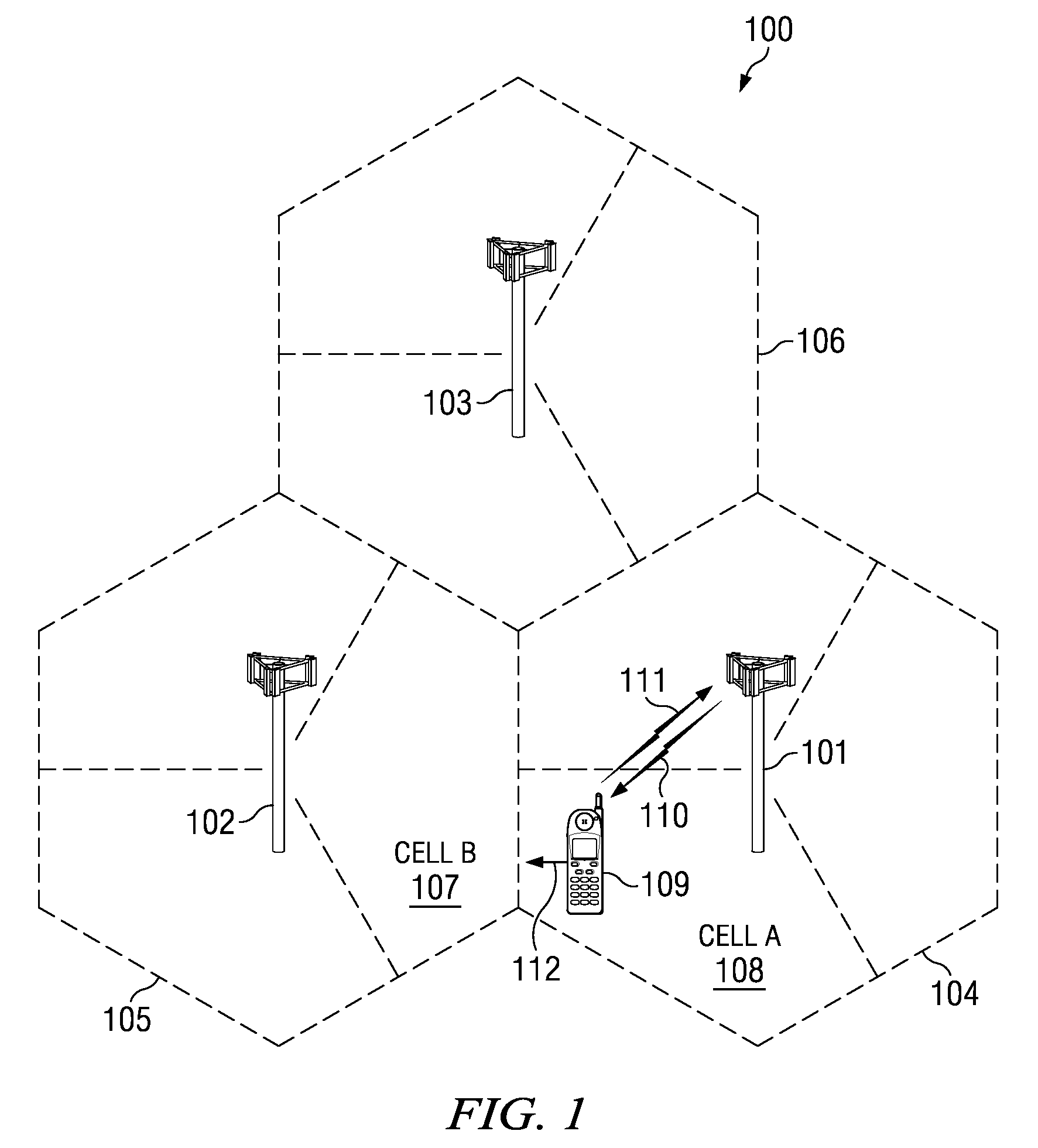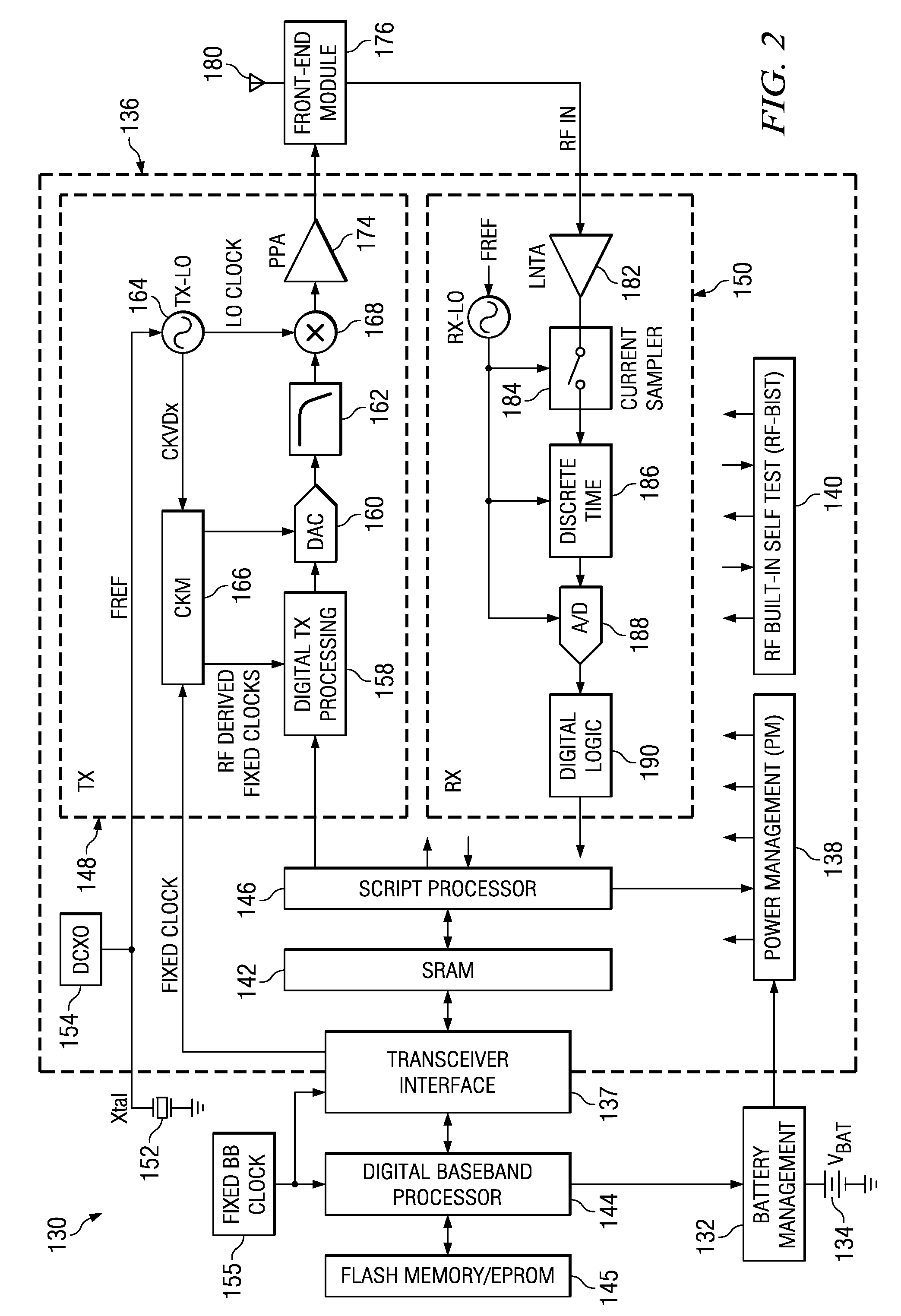Adaptive Complex Gain Predistorter for a Transmitter
a complex gain and transmitter technology, applied in the field of adaptive cartesian transmitter linearization and a wireless transmitter, can solve the problems of large and expensive, and inability to cost effectively add features and reduce footprint. the effect of power consumption
- Summary
- Abstract
- Description
- Claims
- Application Information
AI Technical Summary
Problems solved by technology
Method used
Image
Examples
system embodiment
[0096]FIG. 12 is a block diagram of mobile cellular phone 1000 for use in the network of FIG. 1. Digital baseband (DBB) unit 1002 can include a digital processing processor system (DSP) that includes embedded memory and security features. Stimulus Processing (SP) unit 1004 receives a voice data stream from handset microphone 1013a and sends a voice data stream to handset mono speaker 1013b. SP unit 1004 also receives a voice data stream from microphone 1014a and sends a voice data stream to mono headset 1014b. Usually, SP and DBB are separate ICs. In most embodiments, SP does not embed a programmable processor core, but performs processing based on configuration of audio paths, filters, gains, etc being setup by software running on the DBB. In an alternate embodiment, SP processing is performed on the same processor that performs DBB processing. In another embodiment, a separate DSP or other type of processor performs SP processing.
[0097]RF transceiver 1006 is a digital radio proces...
PUM
 Login to View More
Login to View More Abstract
Description
Claims
Application Information
 Login to View More
Login to View More - R&D
- Intellectual Property
- Life Sciences
- Materials
- Tech Scout
- Unparalleled Data Quality
- Higher Quality Content
- 60% Fewer Hallucinations
Browse by: Latest US Patents, China's latest patents, Technical Efficacy Thesaurus, Application Domain, Technology Topic, Popular Technical Reports.
© 2025 PatSnap. All rights reserved.Legal|Privacy policy|Modern Slavery Act Transparency Statement|Sitemap|About US| Contact US: help@patsnap.com



